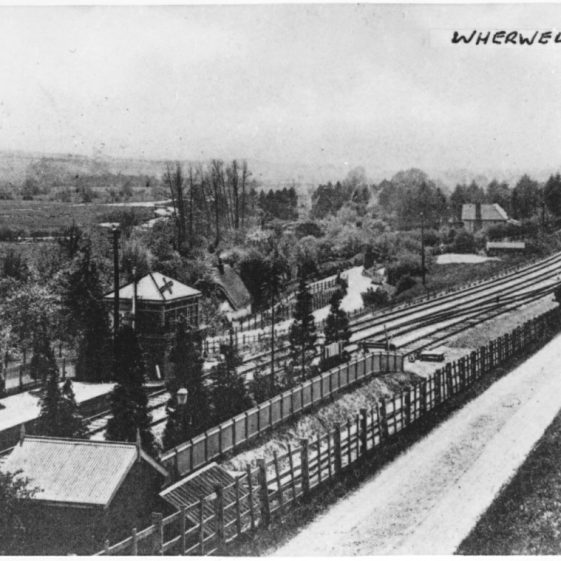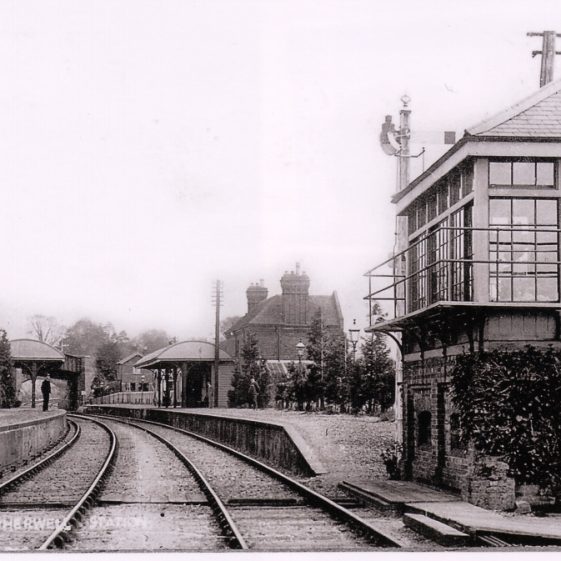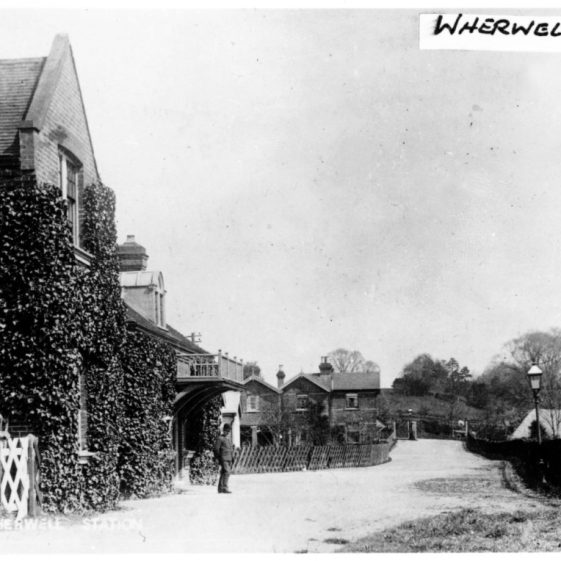LSWR through Wherwell - a Main Line that Might Have Been
When Wherwell had a Double-Track Railway
Many people living in Wherwell must have been struck by the massive
engineering features of the derelict railway line which runs through the village.
If any of them have looked up old maps, they may have been even more
surprised. The short line from Hurstbourne, on the main Basingstoke-Andover
line, to Fullerton Junction was closely paralleled by the older Andover-
Fullerton-Romsey line, and hence at first sight would seem to have been built
only to serve Longparish and Wherwell. In fact, however, the line was built as
part of a complicated set of manoeuvres in the battle for the valuable rail
traffic between Southampton, the Midlands and the North.
In the early 1880s, when the Wherwell line was built, the monopoly of
railway access to Southampton was held by the London and South-Western
Railway. However, this monopoly was being challenged by a new company,
the Didcot, Newbury and Southampton, nominally a small independent
company, but generally considered to be a protégé of the Great Western
Railway. As its title suggests, this company sought to build a new, direct line
from the Midlands to Southampton. The London and South-Western, fearing
to lose its monopoly, hastily promoted the Hurstbourne-Fullerton line, hoping
to cut short the Didcot, Newbury and Southampton at Whitchurch. The plan
was that trains would come down from Didcot to Whitchurch over the new
company’s line, travel along the existing main line to Hurstbourne then down
through Wherwell to Southampton. Hence the Hurstbourne-Fullerton line was
built to main line, double track standards.
In fact, though, the Didcot, Newbury and Southampton rashly pushed on
with its own line south of Whitchurch, through Winchester to a junction with
the Basingstoke-Southampton main-line. If its directors had been wiser, however,
they might have concentrated their efforts and money on building a
faster, double track line to Whitchurch only, although admittedly even that
would have been very expensive. Had they done so Wherwell today might
reverberate to the roar of heavy oil trains from Fawley and container trains
from Southampton Docks heading for the Midlands and the North, as well as
holiday trains to Bournemouth and Weymouth in summer.
In the event, the line through Wherwell remained a quiet backwater, usually
carrying four passenger and one goods train each way until the passenger
service was withdrawn in July 1931, during the economic crisis of that year.
It had already been reduced to single track in 1913. In 1936 the line north of
Longparish was closed even to goods; but the remaining section, from
Fullerton to Longparish retained a goods service until May 1956. The whole
line must always have been highly uneconomic, but before the Great War the
big profits made on main-line railways were able to subsidize such uneconomic
lines. With the growth of road transport, this was no longer the case. In any
event the value of the passenger service to people living in Wherwell was rather
limited. Branch trains mostly ran from Whitchurch to Fullerton. At the latter
place good connections were provided towards Stockbridge and Southampton
but mostly very poor ones to Andover—sometimes involving a wait of over an
hour. In the other direction connections were mainly with stopping trains to
Waterloo. Nevertheless, it was possible in 1909 to travel from Waterloo to
Wherwell in 129 minutes, a time which it would be difficult to equal today
by public transport, with the necessity to change buses in Andover even to
reach Andover station!
This article was first published in the Wherwell Anthology (1976)










No Comments
Add a comment about this page